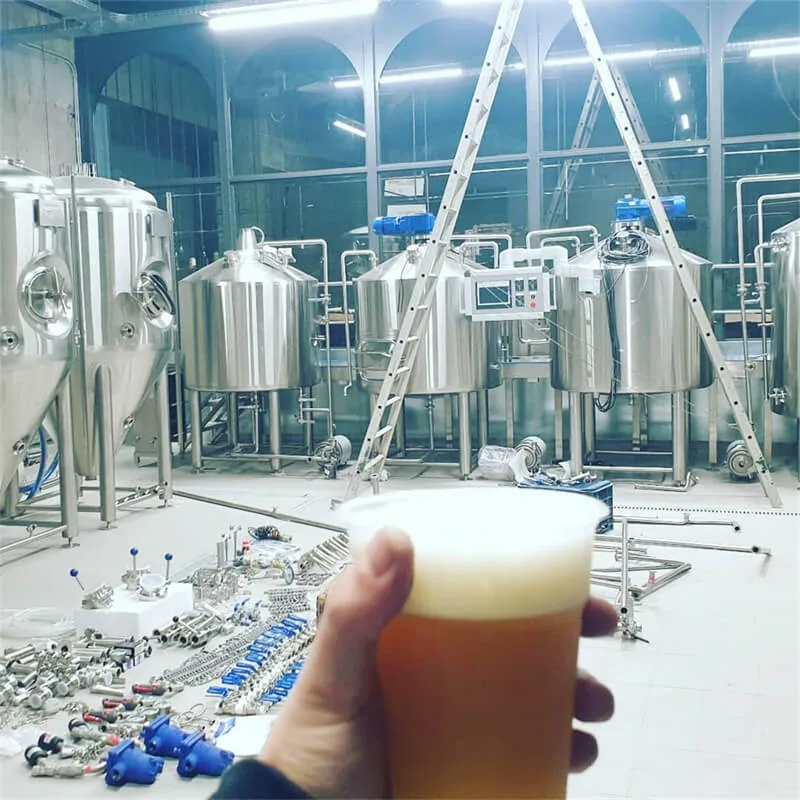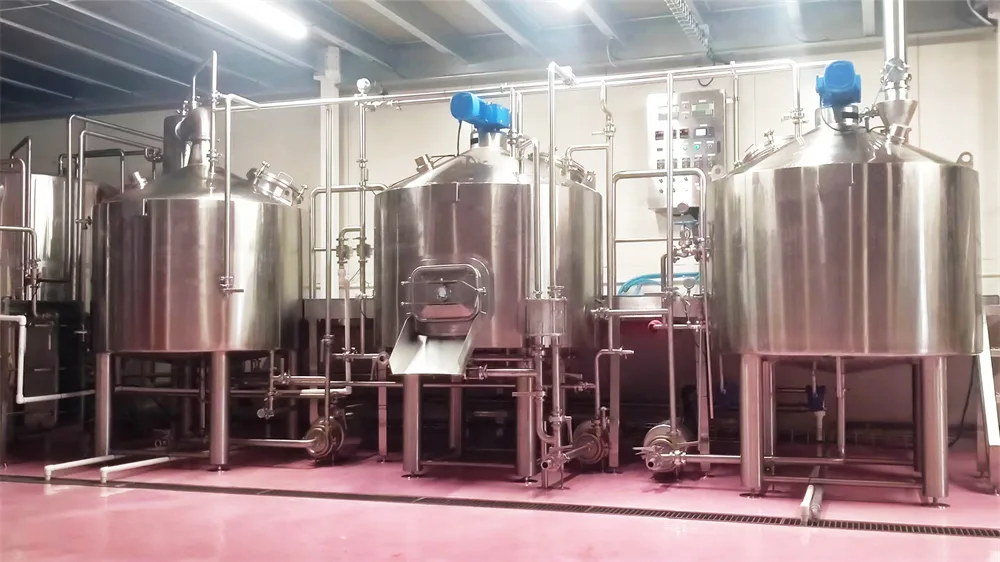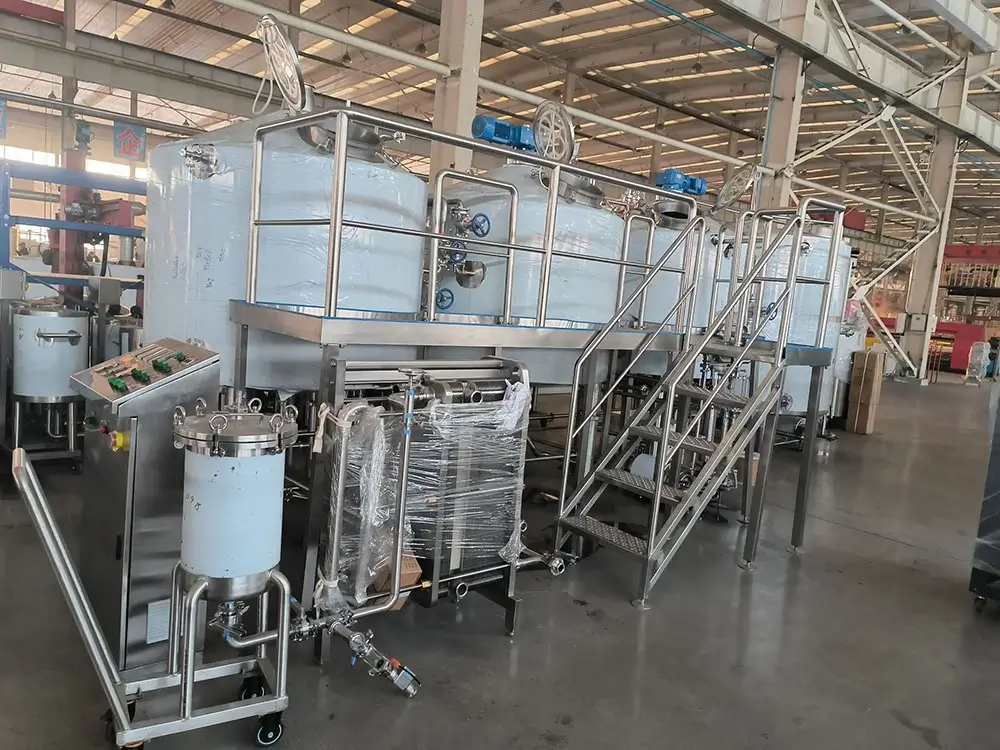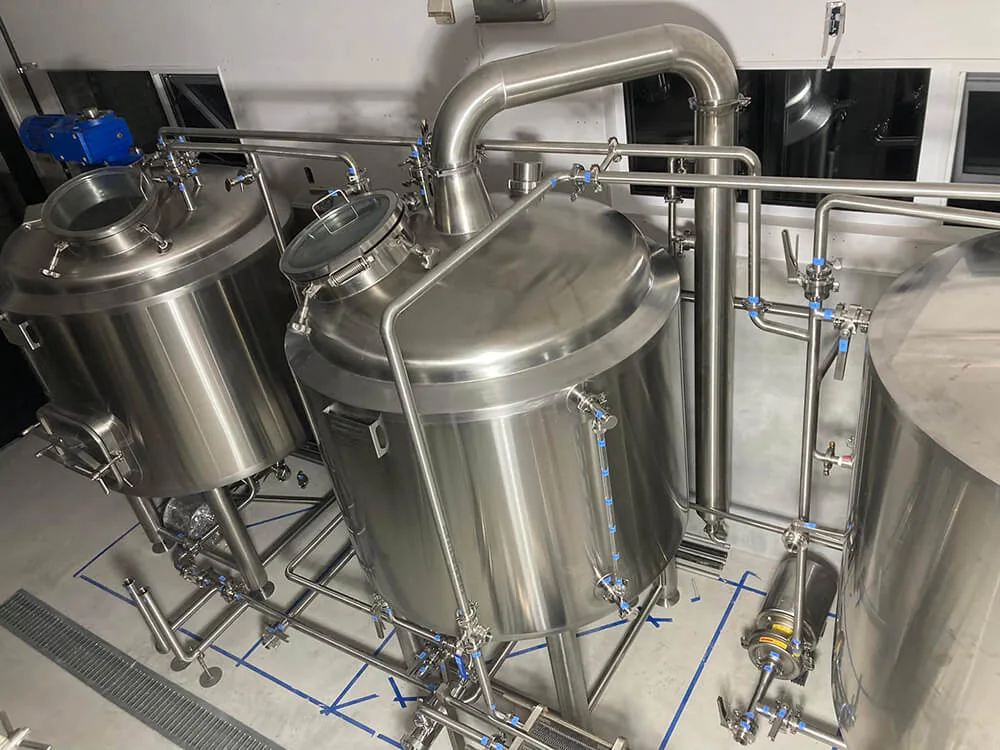Project Detail:
Location:Greek
A Greek brewery purchased a 500L CE-certified brewhouse to expand its craft beer production. The system includes a steam-heated 3-vessel brewhouse, automated valves, and digital control for stable, repeatable brewing.
Three 1000L unitanks with dry hop device, plus a glycol cooling system and CIP cart, ensure flexibility, hygiene, and efficiency. Over 100 stainless steel kegs with couplers complete the packaging line.
This turnkey solution enables the brewery to boost capacity, maintain consistent quality, and meet growing demand, enhancing its competitiveness in the Greek craft beer market.
Main configurations for brewery equipment:
Kegs & Coupler
Malt Milling System 150Kg/hr
500L 3-Vessel Brewhouse System(MT+LT+KWT)
1000L Hot Water System
1000L*3 Fermentation Tanks
13L Dry hop adding device
Cooling system
Cleaning system
PLC type Control for Brewhouse
Digital type Control System separate for FV and cooling system
The 500L Craft Brewery Display
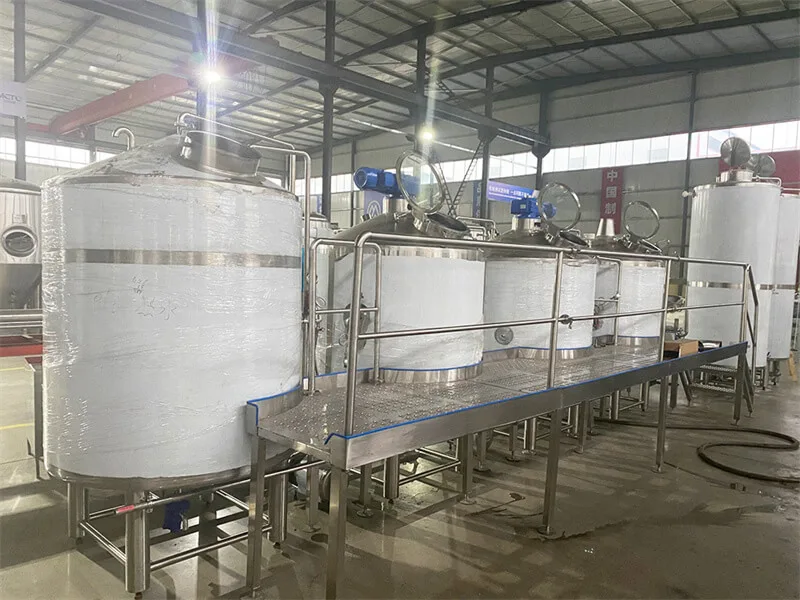
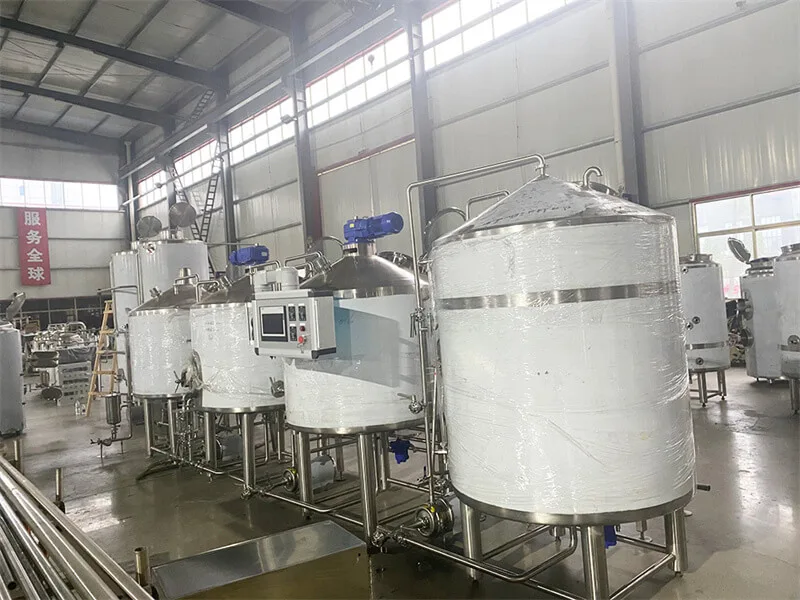
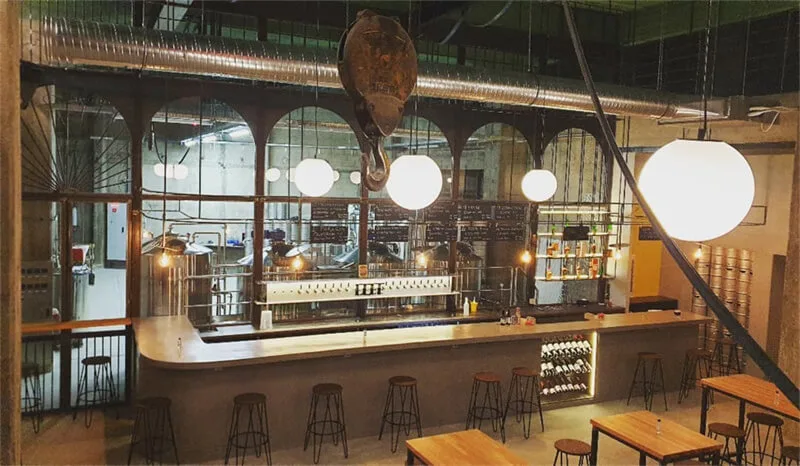
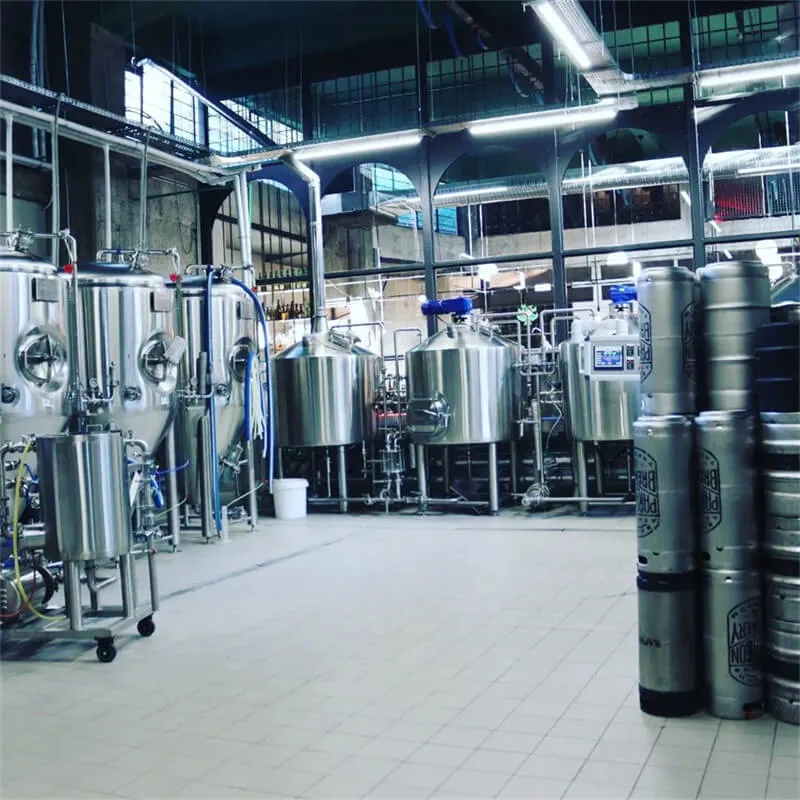
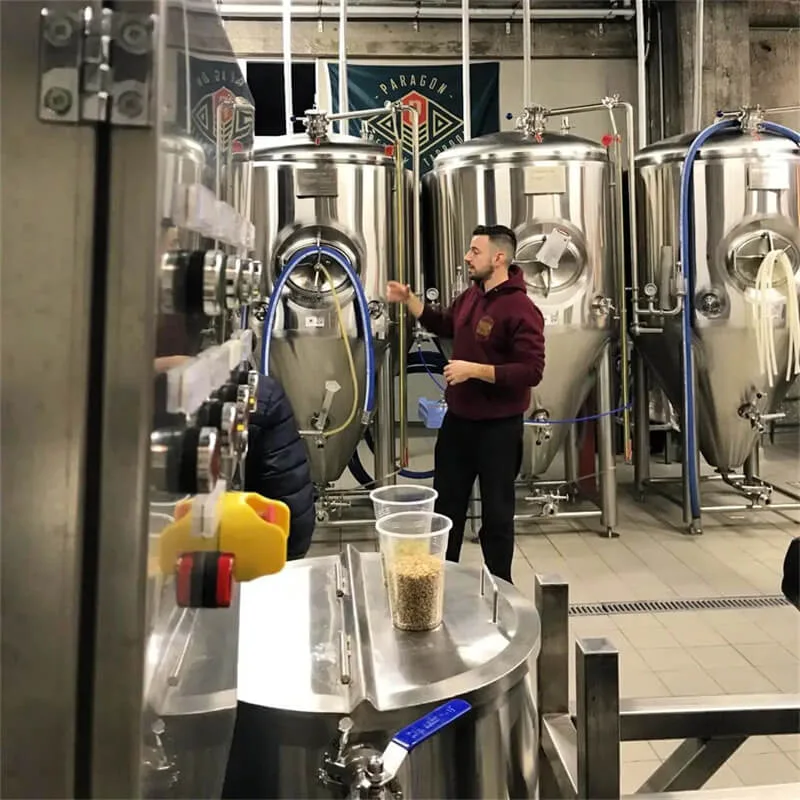
Guide to Restaurant Craft Beer Equipment
Beer brewing equipment in a restaurant is typically simpler than in commercial or independent breweries. A standard setup usually includes the essential components: brewhouse, fermentation tank, bright beer tank, glycol cooling system, control system, and cleaning system.
Many restaurants allocate a separate cellar, but it’s common to place the brewhouse in a visible area—behind a large window or at the bar counter—allowing customers to watch the brewing process. Copper kettles are often the preferred choice for restaurant brewery projects.
Beer is served directly from taps or kegs, requiring suitable dispensing equipment and, in some cases, a walk-in cold room. For restaurant breweries, a minimum brewing capacity of 3 00L per batch is recommended.
Choosing the Perfect Size and Capacity for Brewing Equipment
1.Production Volume
- Define the amount of beer you plan to brew (daily, monthly, yearly).
- Consider market demand, distribution channels, and future growth.
- Target output guides equipment capacity selection.
2. Available Space
- Assess your brewery’s physical space, including floor area, ceiling height, and access points.
- Layout impacts equipment size and configuration.
3. Brewing Process and Batch Sizes
- Match equipment to your brewing process and typical batch sizes.
- Small-batch craft beer and large-batch production require different setups.
- Ensure fermenters and storage tanks align with batch volumes.
4. Scalability and Growth
- Choose equipment that can scale with future growth.
- Avoid needing a full equipment replacement as production increases.
5. Budget and Financial Considerations
- Balance cost with long-term value and performance.
- Consider equipment lifespan, warranty, maintenance costs, and ROI.
6. Utility Requirements
- Confirm electrical, water, and gas needs of the equipment.
- Ensure your facility can meet these requirements.
7. Equipment Integration and Compatibility
- Ensure compatibility with existing or planned systems.
- Consider glycol chillers, kegging/canning lines, filtration, and control systems.
8. Supplier Reputation and Support
- Choose reputable suppliers with proven quality and support.
- Check reviews, seek industry recommendations, and evaluate responsiveness.
If you are also interested in our brewery equipment , please feel free to contact us Meto Equipment. We will recommend the most suitable brewery equipment depending on your requirements and provide you with the most comprehensive and high-quality services.

